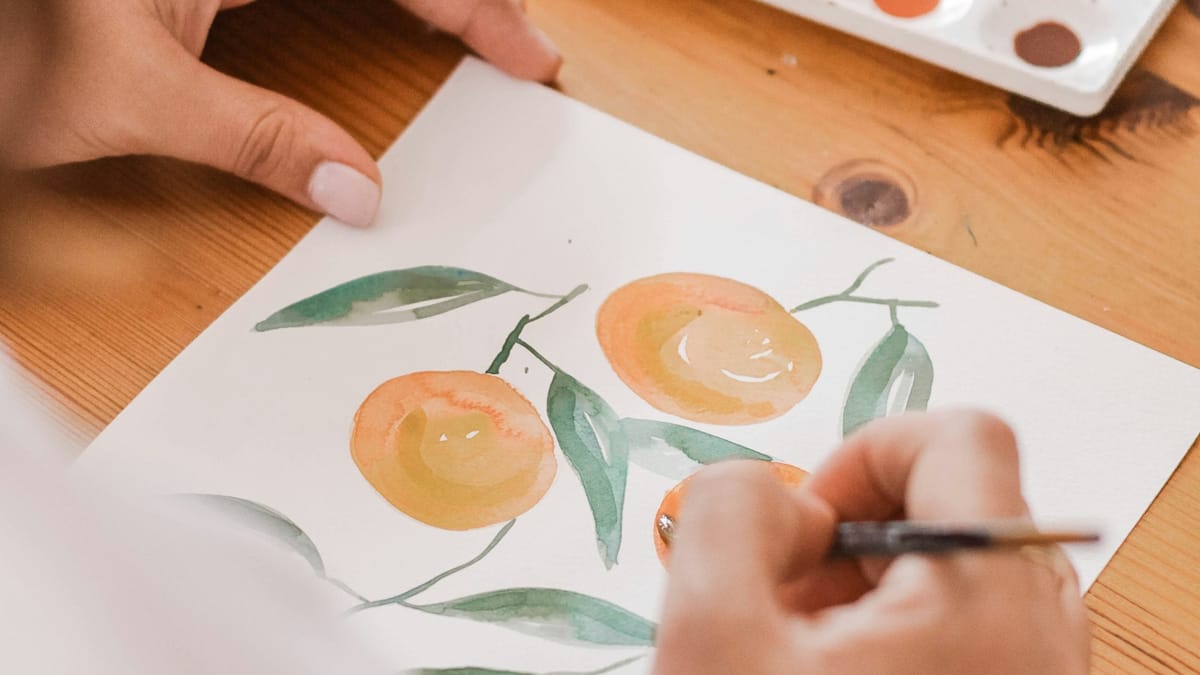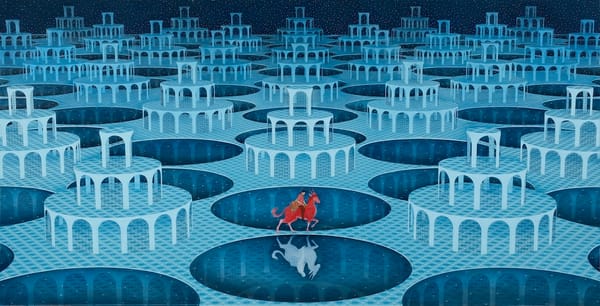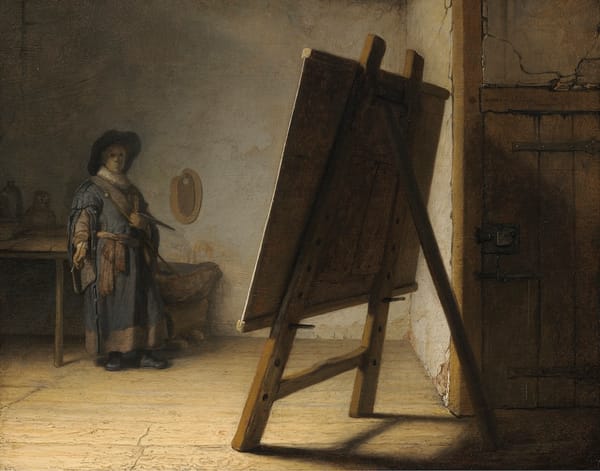12 Tips to Sustain Your Creative Motivation
Maintaining creative motivation can feel challenging, but with clear goals, structured routines, community support and moments of playful experimentation, artists can sustain their creative spark through every high and low, transforming discipline into lasting inspiration.

Maintaining creative motivation can often feel like trying to catch lightning in a bottle: exhilarating when it happens, frustratingly elusive when it doesn’t. As artists, writers, designers and makers of all stripes, we rely on that spark of inspiration to fuel our practice—but even the most passionate among us can experience dry spells, doubt and burnout. The good news is that motivation isn’t purely a gift or a matter of luck; it’s a habit that can be cultivated through intentional practices, routines and mindsets. In this article, we’ll explore a dozen practical tips to help you sustain your creative drive—whether you’re working on a painting, a novel, a digital illustration or any other project that requires imagination and persistence.
1. Set Clear, Achievable Goals
Ambition is vital, but without clear targets it can dissipate into vague frustration.
- Break large projects into smaller tasks. Rather than “finish the collection”, try “complete one sketch a day” or “experiment with three colour palettes this week”.
- Use SMART criteria. Make your goals Specific, Measurable, Achievable, Relevant and Time‑bound. For example: “By 30 September, I will have produced two 30cm × 40cm oil paintings featuring urban landscapes.”
- Track your progress. Maintain a checklist or journal to record completed tasks. Small wins build momentum and reinforce your belief in your ability to finish.
2. Establish a Consistent Routine
Creativity flourishes within structure as much as freedom.
- Choose dedicated creative time. Block off periods in your calendar—even if it’s just 30 minutes each morning—where you treat your creative practice as non‑negotiable.
- Develop rituals. A cup of tea before you start, a five‑minute warm‑up sketch or a playlist that cues your creative mode can signal to your brain that it’s time to focus.
- Respect your natural rhythms. If you’re a night owl, schedule your most demanding tasks for the evening; if you’re an early riser, guard the first hours of daylight for your art.
3. Cultivate an Inspiring Environment
Your surroundings profoundly affect your mood and productivity.
- Declutter and personalise your workspace. A tidy, well‑organised studio or desk reduces distractions and invites the flow of ideas.
- Display stimulants. Pin up colour swatches, favourite artworks, clippings from magazines or photographs that resonate with your current themes.
- Incorporate natural elements. House‑plants, fresh flowers or simply a window with a view can refresh your mind and reduce stress.
4. Embrace Play and Experimentation
When creativity feels like toil, reintroduce the joy of discovery.
- Set aside “no‑pressure” time. Pick up a medium or tool you don’t ordinarily use—watercolour, collage, digital animation—and play without any expectation of outcome.
- Try creative prompts. Participate in challenges like Inktober (daily ink drawings), daily photo prompts or writing exercises. Converting boredom into creative fuel can reignite enthusiasm.
- Allow “happy accidents.” Some of the most memorable art emerges from unplanned smudges, glitches or color bleeds. View mistakes as opportunities rather than failures.
5. Connect with a Community
Isolation can starve your motivation; community can nourish it.
- Join local art groups or studio collectives. Regular meet‑ups, workshops and life‑drawing sessions provide accountability and fresh perspectives.
- Engage online. Platforms like Behance, Instagram, Dribbble or specialised forums allow you to share progress, seek feedback and feel part of a wider creative conversation.
- Arrange “crit” sessions. Honest, constructive critique from peers challenges you to improve and demonstrates that others value your work.
6. Learn Continuously
Stagnation breeds disinterest. Keep your curiosity alive.
- Take workshops and courses. Exploring new techniques—from printmaking to 3D modelling—expands your skillset and reminds you why you fell in love with making things in the first place.
- Read voraciously. Art history, theory, creative nonfiction or novels—all feed the imagination. A stray detail from a book can spark an entirely new concept in your work.
- Study other disciplines. Music, dance, architecture or culinary arts: cross‑pollinating ideas across fields often yields surprising creative breakthroughs.
7. Prioritise Well‑Being
Physical and mental health underpin sustainable creativity.
- Maintain a healthy lifestyle. Regular exercise, balanced nutrition and sufficient sleep keep your energy levels stable and your mind clear.
- Practice mindfulness or meditation. Even a few minutes of focused breathing can reduce anxiety and sharpen concentration before a creative session.
- Recognise burnout. When fatigue sets in, permit yourself a genuine break—step away from the work, take a walk, or switch to a completely different activity for a day or two.
8. Schedule Inspiration Time
Waiting for inspiration to strike seldom works; plan to invite it in.
- Visit galleries, museums and exhibitions. Observing others’ work can provoke new ideas and remind you of the possibilities within your medium.
- Explore nature and architecture. A stroll in the park, a visit to a historic building or even people‑watching in a café can supply fresh stimuli.
- Create an “inspiration file.” Digitally or physically collect images, articles, quotes or textures that move you—refer back to it whenever you feel unimaginative.
9. Track and Reflect on Your Creative Journey
Self‑awareness fosters growth and motivation.
- Keep a creative journal. Note down daily successes, challenges, sources of inspiration and lessons learned. Over time, patterns will emerge—both productive habits and recurring obstacles.
- Review periodically. Monthly or quarterly, assess what’s working and what isn’t. Celebrate milestones achieved and decide which approaches to refine or abandon.
- Set new benchmarks. Once a project concludes, don’t let momentum dissipate. Define your next creative endeavour before the last one has grown cold.
10. Find Sources of Accountability
Knowing someone is expecting you to deliver can spur you into action.
- Public commitments. Announce on social media that you’re undertaking a project, and post regular updates. An engaged audience can become a powerful motivator.
- Creative partnerships. Partner with another artist for a joint project or swap weekly deliverables. The relationship becomes a two‑way support system.
- Mentorship. Seek out a mentor who can help keep you honest about your goals, suggest resources and provide guidance when you feel stuck.
11. Reward Yourself
Positive reinforcement cements habits far more effectively than criticism.
- Plan small treats. After completing a challenging piece or reaching a milestone, reward yourself with a favourite coffee, a walk, or half an hour of leisure reading.
- Celebrate publicly. Share your finished work with friends or on social platforms, and savour the congratulations—it acknowledges your effort and keeps you hungry for the next achievement.
- Reflect on progress. Revisiting earlier creations and noting how far you’ve come can be profoundly satisfying and boost confidence.
12. Embrace the Long View
Creative motivation waxes and wanes; understanding this natural ebb and flow helps maintain perspective.
- Accept impermanence. Not every day will feel inspired, nor should it. Low‑energy days allow for incubation—ideas simmering beneath the surface, waiting for the right conditions to bloom.
- Reconnect with your “why.” Periodically remind yourself why you create: the joy of discovery, the satisfaction of expression, the desire to share beauty or provoke thought.
- Be patient with yourself. Great art often requires persistence and time—not every attempt must result in a masterpiece. Each brushstroke, note or word brings you one step closer to your creative vision.
Conclusion
Sustaining creative motivation is an ongoing practice, not a one‑off achievement. By setting clear goals, establishing routines, curating an inspiring environment and caring for your well‑being, you build a resilient framework that supports your creativity through both highs and lows. Combine these structural habits with moments of play, community engagement and regular reflection, and you’ll find that the spark of inspiration need no longer be a capricious guest but a steady companion on your artistic journey. Remember: creativity thrives not in spite of effort and discipline, but because of it.





